After Jesus’ resurrection, the Apostles and Christians met often “in Solomon’s Colonnade….(and) more and more men and women believed in the Lord and were added to their numbers.” (Acts 5:12-14)
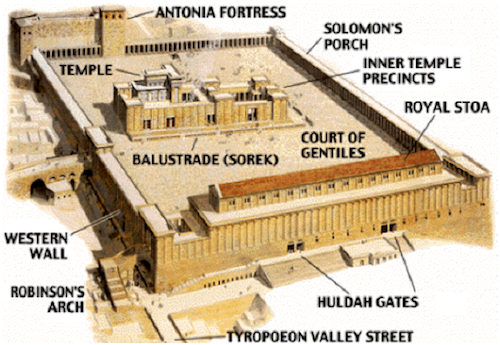
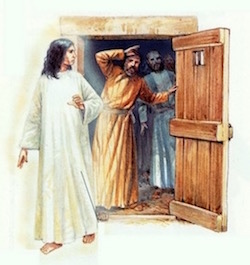 To the Sadducees, who did not believe in the resurrection of the dead and whose sect, ironically, completely disappeared after the destruction of Jerusalem in 70 AD, this preaching of the resurrection of Jesus was anathema. Because they were influential in the Sanhedrin, the Sadducees had all the Apostles arrested and put in the public jail. But “during the night an angel of the Lord opened the doors of the jail and brought them out. ‘Go, stand in the temple courts,’ he said, ‘and tell the people the full message of this new life.’
To the Sadducees, who did not believe in the resurrection of the dead and whose sect, ironically, completely disappeared after the destruction of Jerusalem in 70 AD, this preaching of the resurrection of Jesus was anathema. Because they were influential in the Sanhedrin, the Sadducees had all the Apostles arrested and put in the public jail. But “during the night an angel of the Lord opened the doors of the jail and brought them out. ‘Go, stand in the temple courts,’ he said, ‘and tell the people the full message of this new life.’

At daybreak (the Apostles) entered the temple courts, as they had been told, and began to teach the people.” (Acts 5:19-21) The Sadducees were livid, brought the apostles before the Sanhedrin and castigated them for disobeying their orders. When Peter replied, “We must obey God rather than men! The God of our fathers raised Jesus from the dead—whom you killed by hanging him on a tree….We are witnesses of these things,” the Sadducees were “furious and wanted to put them to death.” Acts 5:29-33
But: “…a Pharisee named Gamaliel, a teacher of the law, who was honored by all the people, stood up in the Sanhedrin and ordered that the men be put outside for a little while…
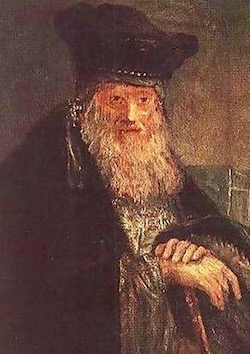
Then he addressed (the Sanhedrin): ‘Men of Israel, consider carefully what you intend to do to these men. Some time ago Theudas appeared, claiming to be somebody, and about four hundred men rallied to him. He was killed, all his followers were dispersed and it all came to nothing. After him, Judas the Galilean appeared…and led a band of people in revolt. He too was killed and all his followers were scattered. Therefore in the present case, I advise you: Leave these men alone! Let them go! For if their purpose or activity is of human origin, it will fail. But if it is from God, you will not be able to stop these men; you will only find yourselves fighting against God.’ His speech persuaded them. They called the apostles and had them flogged….ordered them not to speak in the name of Jesus and let them go…
The apostles left the Sanhedrin, rejoicing because they had been counted worthy of suffering disgrace for the Name. Day after day, in the temple courts and from house to house, they never stopped teaching and proclaiming the good news that Jesus is the Christ.” Acts 5:34-42
Gamaliel’s argument for the Apostles in the Book of Acts has prompted numerous references to him as a covert Christian.
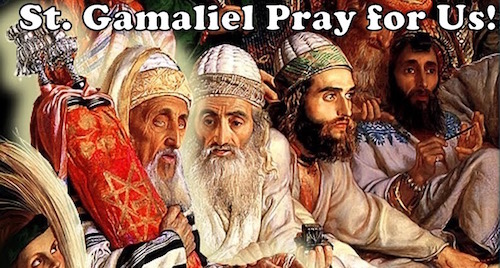
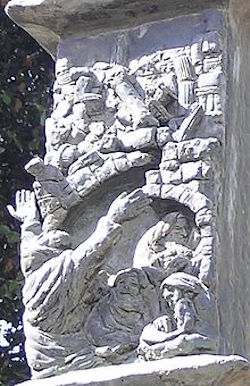
The Clementine Literature dating from c. 100-300 asserts Gamaliel was a silent Christian in order to help his fellow Christians. Recognitions of Clement 1.65-67 Some early manuscripts aver that Gamaliel and his son Simeon (named after Gamaliel’s father) were baptized by Peter and John. There is no ancient Jewish textual evidence that Gamaliel was a convert to Christianity.
However, it is noted that Gamaliel, this most celebrated leader of the school of Hillel in Jerusalem, is not represented as the one who continued the Mishnaic tradition of his grandfather Hillel. In the chain of tradition given in the Mishnah (Avot i.,ii), Johanan b. Zakkai is given that mantle.
It can be deduced that for some unknown reason Gamaliel did not deserve, could not or did not want to inherit the authority of his grandfather Hillel.
Gamaliel is seldom mentioned in the Halakhah, but Johanan b. Zakkai, the successor to Gamaliel’s grandfather, does comment that when Gamaliel died in c. 50-52, “the honor of the Torah ceased and purity and piety became extinct.” Sotah 15:18
There is a long history in the Christian church that claims Gamaliel was a Christian. His purported remains, as well as the relics of the Biblical Nicodemus, are in the Christian Duomo in Pisa, Italy.
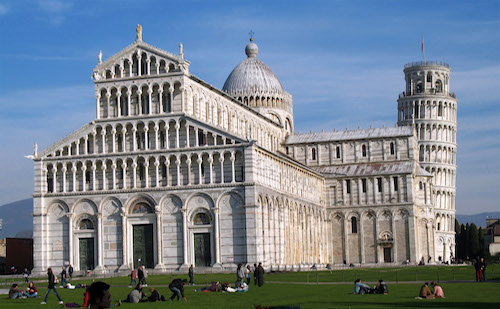
The Early Church claimed Gamaliel in the August 3 celebration in the Roman Martyrology (300’s) and a superb Renaissance painting by a student of Carlo Saraceni, assuming the truth of Gamaliel as a Christian, was done as late as 1615. It is called St. Stephen Mourned by Saints Gamaliel and Nicodemus (below) and is in the Museum of Fine Arts in Boston.
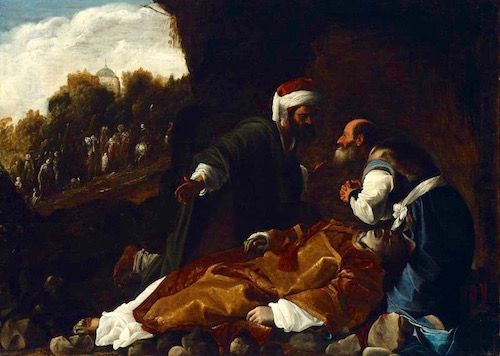
Whether Gamaliel was a Christian or not, on that day in c. 33 before the Sanhedrin Rabban (“our master”) Gamaliel gave a reasonable, historically-based argument that prevented the deaths of the Apostles. But neither the elders, rulers, scribes, Pharisees nor Sadducees could stop the steady growth of this “Nazarene sect” (Acts 24:5) among the Jews.—Sandra Sweeny Silver
